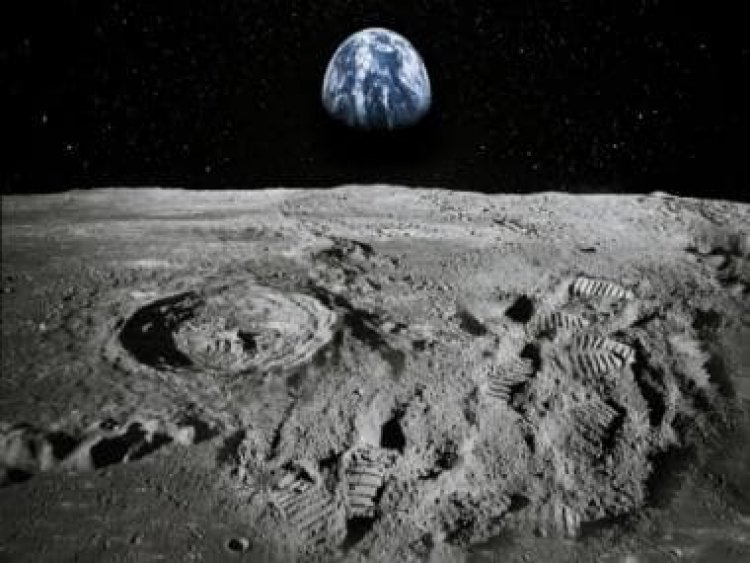Colonising the Moon: Scientists find new water source on the Moon that may support human life
Colonising the Moon: Scientists find new water source on the Moon that may support human life

For decades, ever since the first human flew off into space, there has been a desire among humans to go to a different planet, or any other astronomical body, and colonise it. That is one of the reasons why, governments, scientists and tech moguls are spending billions of dollars in exploring planets and other rocks in space that can sustain human life. Now, it seems that we are one step closer to colonising the Moon.
According to a team of Chinese scientists, a new and renewable supply of water has been discovered on the Moon, which could make it simpler for future explorers to reside there. Water embedded in small glass beads in lunar soil where meteorite collisions occurred was discovered in samples taken from the Moon by China in 2020.
The water in these shiny, multicoloured beads was discovered to be reasonably simple to extract, with ideas that they could even be used as propellant or for astronauts to consume.
India’s Chandrayaan mission confirmed water on the Moon in 2008
Experts have known for years that there is water on the Moon in the form of ice in shaded areas at its poles, thanks to one of the biggest breakthroughs in lunar exploration, which was led by India’s Chandrayaan mission, which discovered water on the lunar surface in 2008.
The new discovery, by the Chinese scientists, could be proof of an ongoing water cycle, according to experts.
The samples were retrieved by Beijing’s Chang’e 5 lunar expedition, and the results were published in the journal Nature Geoscience on Monday.
According to Hejiu Hui of Nanjing University, who participated in the study, the 32 randomly selected glass beads ranged in size from the width of one hair to several hairs; the water content was only a minuscule fraction of that. Because there are billions, if not trillions, of these impact beads, there could be a significant quantity of water, but mining it would be difficult, according to the researchers.
“Yes, a lot of glass pieces will be needed,” Hui said. “On the other side, there are many, many pearls on the Moon,” he added.
Because of the constant bombardment of hydrogen in the solar wind, these beads could produce water indefinitely.
Is there an undiscovered source of water on the Moon?
Surface water on the Moon exhibits diurnal cycles and loss to space, implying that a hydrated layer or reservoir at deep in lunar soils is required to support the retention, release, and replenishment of water on the Moon’s surface.
Previous investigations of the water inventory of small mineral granules in lunar soils, impact-produced agglutinates, volcanic rocks, and pyroclastic glass beads, however, have been unable to explain the preservation, release, and replenishment of water on the Moon’s surface. (i.e., the lunar surface water cycle). As a result, there must be an undiscovered water reserve in lunar sediments capable of buffering the lunar surface water cycle.
These impact pearls can be found all over the place as a consequence of the cooling of melted material released by approaching space debris. Water could be removed by heating the beads, which could be accomplished by future robotic operations. More research is required to establish whether this is feasible and, if so, whether the water is safe to drink.
The results, according to Chinese Academy of Sciences (CAS) Professor Sen Hu, “indicate that the impact glasses on the surface of the Moon and other airless bodies in the solar system are capable of storing solar wind-derived water and releasing it into space.”
How this changes interplanetary travel and space expeditions of the future
According to Prof Lewis Dartnell, an astronomer at the University of Westminster, it could have a significant effect on future Moon expeditions. The continuing process of solar wind hydrogen bonding to oxygen and the water produced moving underground to be incorporated into glass beads replenishes the subsurface reservoir,’ he explained.
‘The existence of water on the lunar surface is significant because it would provide a critical resource for long-term human settlement of the Moon. “Of course, water is required for consumption, but it can also be divided using electrolysis to produce oxygen for breathing in the habitats,” he said.
Previous studies found water in glass beads formed by lunar volcanic activity, based on samples returned by the Apollo Moonwalkers more than half a century ago.
Read all the Latest News, Trending News, Cricket News, Bollywood News,
India News and Entertainment News here. Follow us on Facebook, Twitter and Instagram.
What's Your Reaction?

























































